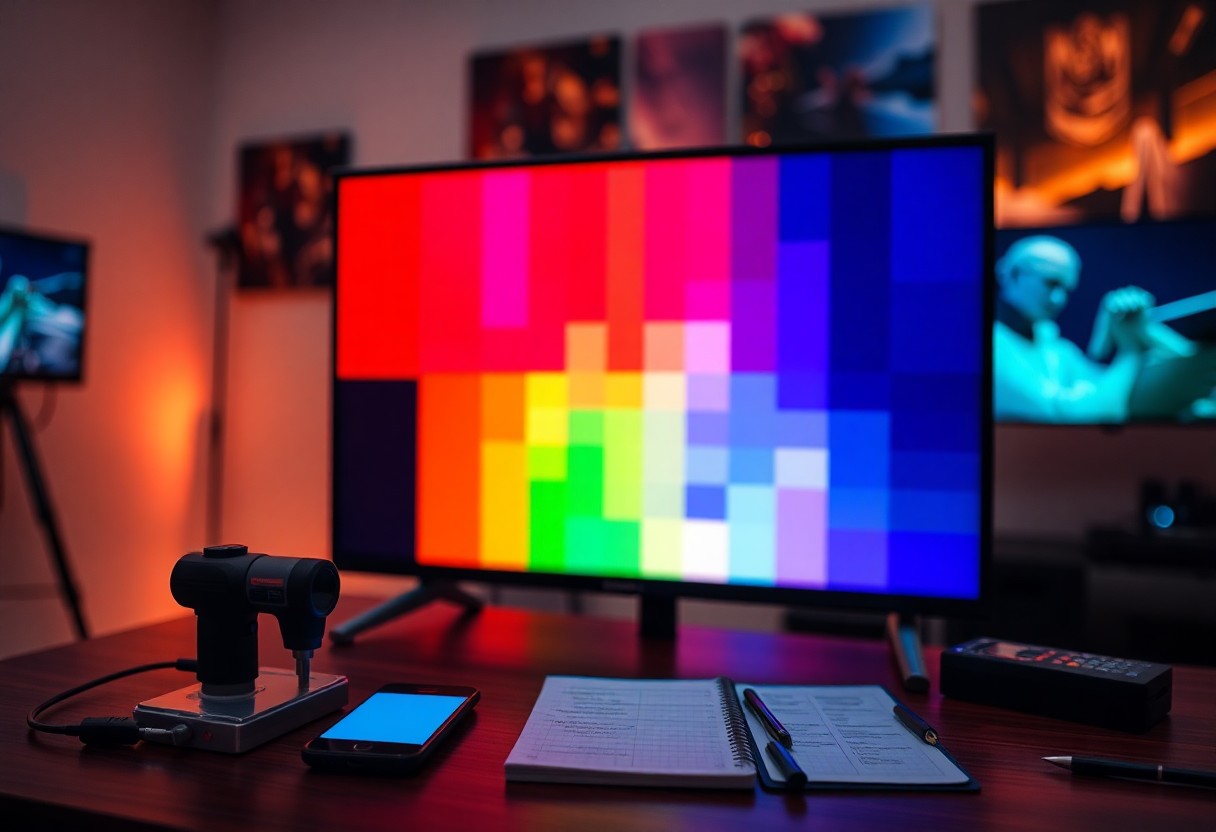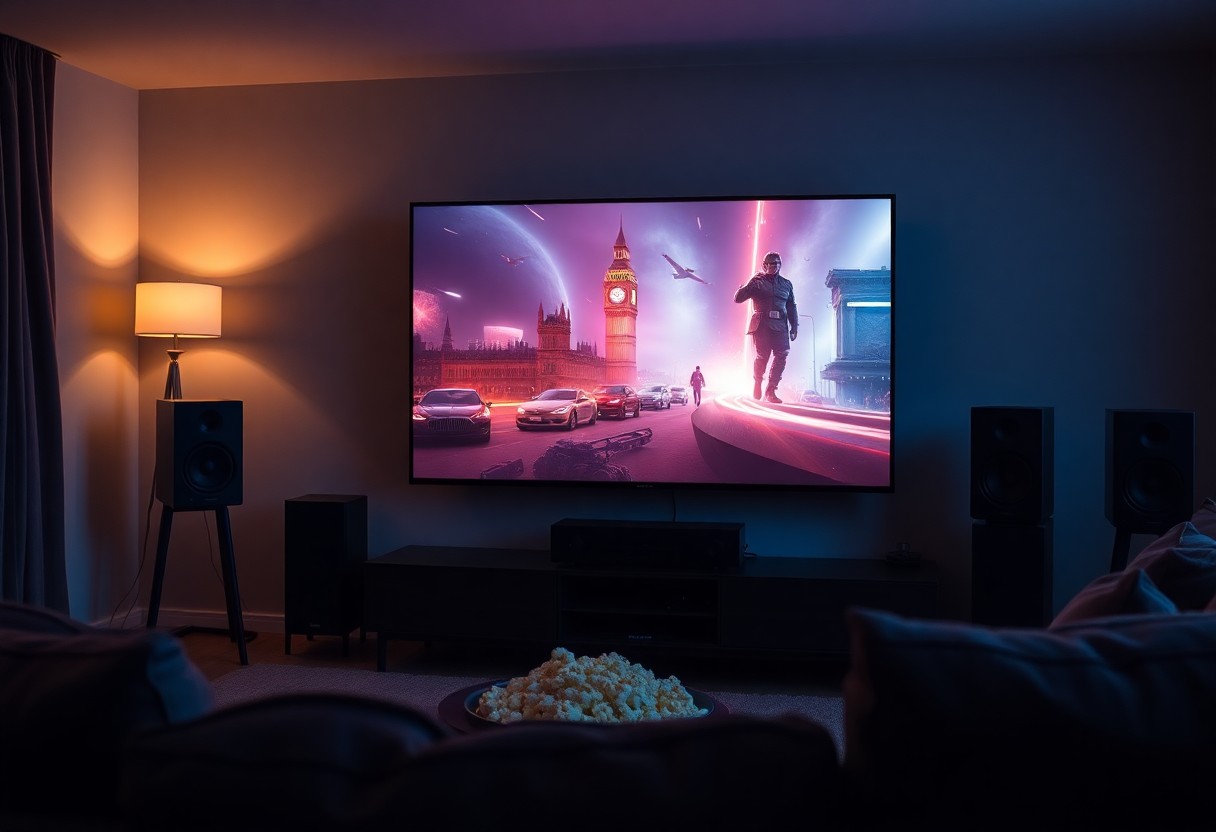How-to Optimize Your Smart TV For A Cinematic Experience
Optimize your viewing experience by making key adjustments to your smart TV settings. You can enhance picture quality and sound clarity to create an immersive environment, much like a movie theater. Adjust brightness, contrast, and audio settings for optimal performance, and explore apps and streaming services that offer high-definition content. Taking the time to calibrate your device will significantly affect your enjoyment, making your home entertainment setup truly exceptional.
Contents
- Understanding Your Smart TV
- Key Features to Consider
- Operating System Insights
- Display Settings Optimization
- Brightness and Contrast Adjustments
- Color Calibration Techniques
- Audio Enhancements
- Sound Settings Overview
- External Sound System Integration
- Internet Connection and Streaming Quality
- Importance of Bandwidth
- Choosing the Right Streaming Services
- App and Firmware Management
- Essential Apps for Cinematic Viewing
- Keeping Your TV Updated
- Environmental Factors
- Room Setup for Optimal Viewing
- Lighting Considerations
- To wrap up
Understanding Your Smart TV
To fully appreciate your smart TV’s potential, it’s crucial to understand its components and capabilities. Different models may offer unique features, but a solid grasp of the basics will enhance your viewing experience. From resolution quality to app accessibility, knowing these elements will help you optimize settings for an immersive cinematic adventure.
Key Features to Consider
When selecting your smart TV, consider these key features that contribute to its performance:
- Resolution (4K, 8K)
- HDR support
- Refresh rate (60Hz, 120Hz)
- Smart Platform (Roku, Android, Tizen)
- Audio technology (Dolby Atmos, DTS)
- Connectivity options (HDMI, USB)
Perceiving these features allows you to make informed choices, ultimately leading to a more captivating home theater experience.
Operating System Insights
Your smart TV’s operating system plays a significant role in usability and content access. The most common platforms include the user-friendly Roku and advanced Android TV, each offering unique app ecosystems and features. Compatibility with voice assistants and streaming services varies by OS, affecting how you navigate your viewing options. You should focus on how the operating system enhances your interaction with apps and media, ensuring you can easily find and enjoy content that suits your preferences.

Display Settings Optimization
Fine-tuning your display settings can significantly enhance your cinematic experience. By adjusting brightness, contrast, and color profiles, you can achieve a more immersive viewing atmosphere tailored to your preferences. This section will guide you through important adjustments that can bring out the best in your smart TV.
Brightness and Contrast Adjustments
Start by calibrating the brightness and contrast settings to achieve optimal image quality. Ideally, your brightness should allow you to see details in dark scenes without sacrificing the depth of shadows, while contrast should accentuate the difference between light and dark areas. Aim for a contrast ratio of at least 1000:1 for vibrant and dynamic content.
Color Calibration Techniques
Accurate color calibration is key to a lifelike viewing experience. Use built-in calibration tools or color calibration patterns available online to fine-tune hues and saturation. Simple adjustments can significantly impact how colors are perceived, with a focus on achieving a balanced palette without oversaturation.
Utilizing a colorimeter for more precise calibration can offer even greater accuracy. These devices measure the color output of your TV, allowing you to tweak the RGB settings for each primary color. For instance, if reds appear too vivid while greens lack depth, adjusting these color channels with a calibration tool can lead to a significant improvement in overall picture quality. This ensures that movies, sports, and other content appears true to life, making your viewing experience much more enjoyable.

Audio Enhancements
Sound Settings Overview
To enhance your cinematic experience, probe into your smart TV’s sound settings. Adjust options like equalizer, surround sound modes, and adaptive sound features tailored for different genres. Experimenting with these settings can elevate dialogue clarity and provide a more immersive feel while watching action-packed scenes or emotional dramas.
External Sound System Integration
Integrating an external sound system, such as a soundbar or surround sound speakers, can dramatically improve audio quality. Connecting via HDMI ARC or optical output allows you to bypass your TV’s built-in speakers, resulting in richer sound and better bass fidelity.
For optimal integration, look for sound systems supporting formats like Dolby Atmos or DTS:X for a spatial audio experience. Many modern soundbars feature wireless capabilities, making setup easier without the clutter of cables. After connecting, ensure your TV’s audio output is set to the new system, allowing dynamic range and balance to transform your viewing environment. Features like auto-calibration can help tailor your sound settings based on your room’s unique acoustics, ensuring that every scene resonates with the depth it deserves.
Internet Connection and Streaming Quality
Your internet connection significantly impacts the overall quality of your cinematic experience. A stable and fast connection enhances streaming by providing the necessary bandwidth for high-definition content, reducing buffering and improving picture clarity. Aim for at least 25 Mbps for 4K streaming to enjoy a seamless viewing experience. Regularly check your internet speed and consider using a wired connection for more reliable performance.
Importance of Bandwidth
Bandwidth directly influences the quality of the streaming experience. With higher bandwidth, you can watch content in better resolutions without interruptions. For instance, streaming in 4K requires more than double the bandwidth of standard HD, necessitating a minimum of 25 Mbps to maintain quality. Without sufficient bandwidth, you risk experiencing slow load times and pixelated images.
Choosing the Right Streaming Services
Opting for the right streaming services can greatly enhance your viewing experience. Each service offers different content libraries, streaming quality, and subscription models, which can impact your budget and available titles. For instance, platforms like Netflix and Amazon Prime Video provide extensive collections of 4K UHD content, while others may focus more on classic films or niche genres. Ensure you select services that align with your viewing preferences and that support high-resolution playback for the best cinematic experience.
Evaluating streaming services involves considering the type of content you enjoy and the streaming quality you expect. Popular services such as Netflix, Hulu, and Disney+ cater to various tastes, but not all offer the same resolution options or bandwidth capabilities. For example, if you prioritize original content, you might lean towards Netflix, whereas Disney+ excels in family-oriented films and franchises. Check if they support HDR and 4K Streaming, ensuring your selections match your smart TV’s capabilities for an optimal cinematic experience.
App and Firmware Management
Your smart TV thrives on a streamlined selection of applications and up-to-date firmware. Ensuring that both are well-managed enhances performance and security, while also avoiding compatibility issues with streaming services. By regularly auditing installed apps and removing those you rarely use, you optimize storage and functionality, paving the way for an uninterrupted viewing experience.
Essential Apps for Cinematic Viewing
For a top-tier cinematic experience, focus on downloading and utilizing the best streaming apps like Netflix, Amazon Prime Video, and Disney+. Additionally, consider platforms that offer 4K content, such as YouTube or Apple TV+. These applications not only provide a vast range of titles but also support high-definition, immersive viewing that can elevate your movie nights.
Keeping Your TV Updated
Updating your smart TV’s firmware is vital for accessing new features and improving performance. Manufacturers regularly release updates that enhance usability, fix bugs, and patch security vulnerabilities. By enabling automatic updates in your settings, you ensure your TV always operates at peak efficiency, reducing the chances of glitches during your cinematic experiences.
Staying on top of firmware updates not only improves your smart TV’s functionality but also enhances the security of your personal information. For example, Samsung and LG both provide regular update notifications. If you commence the update process promptly, you can avoid significant performance issues that might disrupt your viewing experience, such as lagging or app failures. Additionally, newer firmware often optimizes compatibility with the latest content formats, ensuring your TV remains future-proof as streaming services evolve.
Environmental Factors
To enhance your cinematic experience, consider the environmental factors within your viewing area. Factors such as ambient noise, screen glare, and room size significantly impact your enjoyment. Focus on elements like acoustics and decor that can create an immersive atmosphere.
- Ambient noise control
- Screen glare reduction
- Room size optimization
- Acoustic treatments
Any adjustments made to your environment can elevate the quality of your smart TV experience.
Room Setup for Optimal Viewing
Your room setup plays a vital role in delivering a perfect viewing angle. Position your seat at approximately 1.5 to 2.5 times the diagonal screen size from your TV for the best comfort. Ensure that the screen is at eye level to eliminate neck strain and provide a more natural viewing experience.
Lighting Considerations
Effective lighting greatly influences how well you perceive colors and contrasts on screen. Avoid direct sunlight and harsh overhead lights that can create distracting glare on your TV. Instead, opt for soft, adjustable lighting to enhance cinematic moments while still maintaining a cozy atmosphere.
Use dimmable lights and consider installing blackout curtains to control sunlight during the day. The ideal scenario is to have a mix of ambient and task lighting that complements your viewing without overpowering it. Smart lighting solutions can also maximize convenience, allowing you to adjust brightness levels easily depending on the scene—be it action-packed or romantic. Ensuring that your room has the right lighting can profoundly affect your overall viewing pleasure.
To wrap up
Upon reflecting, optimizing your smart TV for a cinematic experience involves fine-tuning settings, investing in quality audio systems, and ensuring a proper viewing environment. By adjusting brightness and contrast, selecting the right picture mode, and utilizing external speakers or soundbars, you elevate your viewing pleasure. Additionally, managing ambient light and positioning your TV at the correct height enhances overall immersion. Follow these tips to transform your home into a personal cinema that enhances your movie nights and streaming sessions.